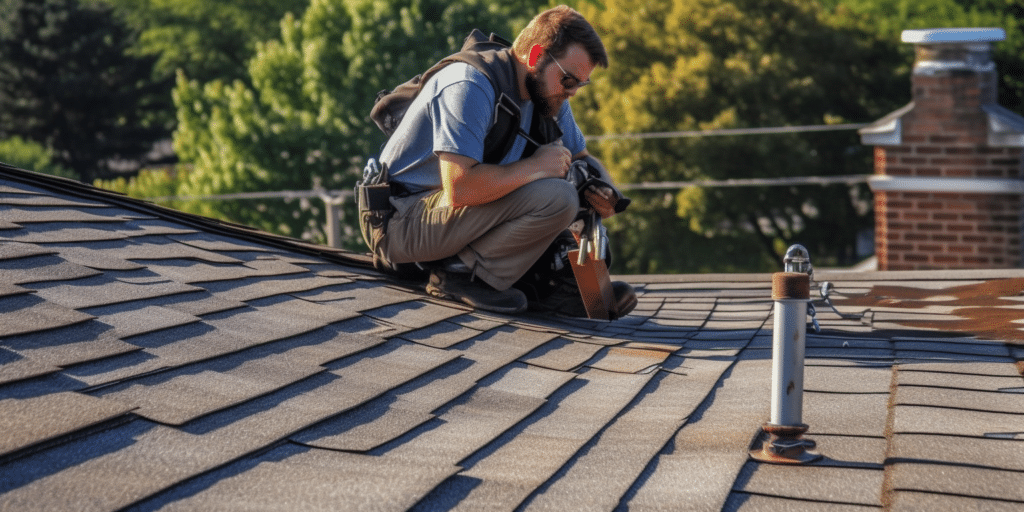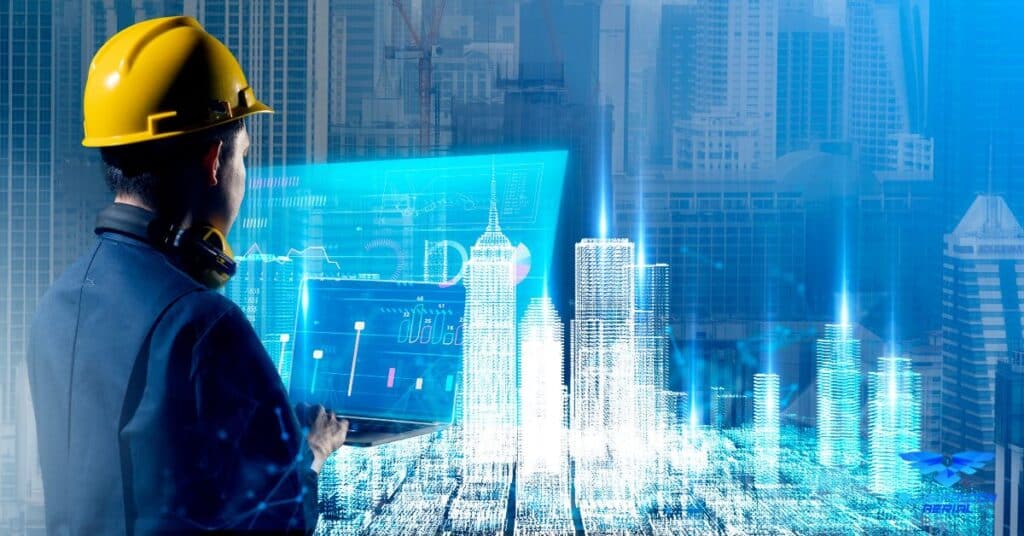One field that has seen unprecedented growth is the use of drones, particularly for roof inspections. Drone Roof Inspection, as it’s commonly known, is not just a tech buzzword but a transformational process that has redefined the landscape of property maintenance, safety, and assessment. This article will provide a comprehensive guide to mastering advanced aerial surveys, ultimately empowering you to leverage drones for the accurate, efficient, and safe inspection of roofs.
Key Takeaways
- Drone Roof Inspections Offer Enhanced Safety and Efficiency: Drones eliminate the need for physical climbing, making roof inspections safer and faster.
- High-Resolution and Thermal Imaging for Accurate Assessments: Drones equipped with advanced imaging technologies provide detailed insights into roof conditions.
- Compliance with Legal and Regulatory Standards is Essential: Operators must adhere to FAA regulations and local privacy laws during inspections.
- Cost-Effectiveness of Drone Inspections: While costs vary, drone inspections are generally more economical and time-efficient compared to traditional methods.
- Selection of the Right Equipment: Choosing a suitable drone with a high-quality camera and stable flight capabilities is crucial for effective inspections.
- Incorporating Advanced Technologies like AI and Machine Learning: These technologies enhance the accuracy and efficiency of roof inspections.
- Professional Opportunities in Drone Roof Inspection Services: There’s growing demand for skilled drone operators in the real estate, insurance, and construction industries.
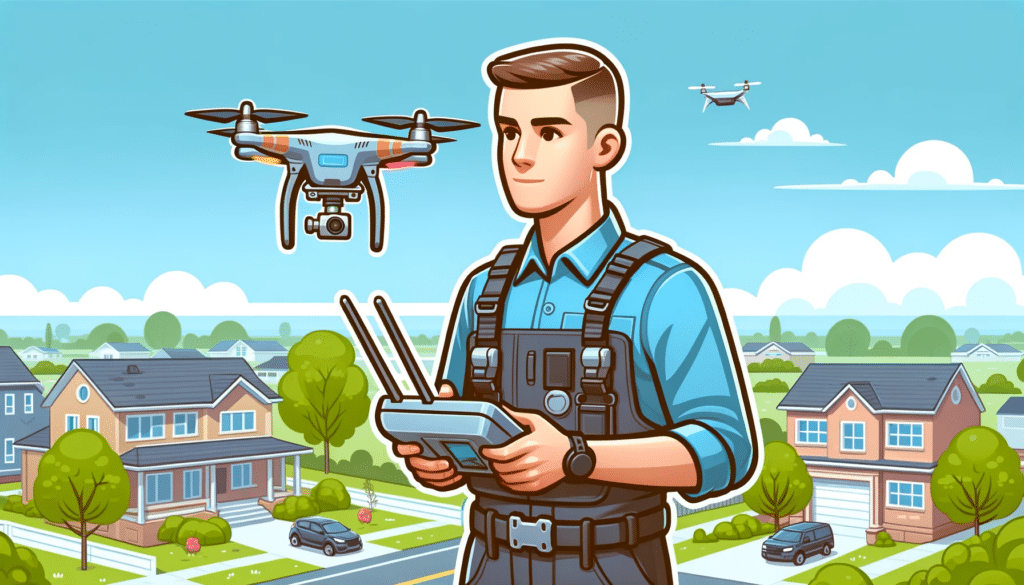
What is Drone Roof Inspection?
In this digital age, various industries have adopted technology to improve efficiency and accuracy. One such application of technology is drone roof inspection. It is the process of using drones, also known as Unmanned Aerial Vehicles (UAVs), to inspect and evaluate the condition of a building’s roof. Equipped with high-resolution cameras and sometimes thermal sensors, drones can capture detailed images and videos of a roof, thus providing valuable data for inspection.
Understanding How Drone Roof Inspections Work
During a drone roof inspection, a drone flies over the roof and captures high-definition images and videos. Advanced drones can follow pre-programmed flight paths to ensure complete coverage of the roof area, while other drones may be manually controlled by a skilled operator. The drone’s camera captures images of the roof’s condition, highlighting any damage or potential issues that need to be addressed.
Most drones have the capability to capture both RGB images (visible light images similar to a typical photograph) and thermal images, which can be used to detect heat loss or water leakage. The data collected from these drones can then be used to create a detailed report of the roof’s condition, which can be further used for maintenance planning and damage prevention.
The Legality of Drone Roof Inspections
Drone roof inspections, like all drone operations, are subject to regulations by aviation authorities. In the United States, the Federal Aviation Administration (FAA) oversees all commercial drone operations, including roof inspections. As per FAA regulations, commercial drone operators are required to obtain a Part 107 certification, which includes passing an aeronautical knowledge test.
Additionally, drone operations must comply with several restrictions such as not flying over people, maintaining a visual line of sight with the drone, and not operating in controlled airspace without proper authorization. It is also important to note that privacy laws may apply, especially in residential areas, and operators must respect these laws while conducting drone roof inspections.
Why Drone Roof Inspection is a Game Changer
Innovation in drone technology has revolutionized roof inspections, turning them from often risky and time-consuming procedures into safer, faster, and more precise assessments.
Benefits of Drone Roof Inspections
The foremost benefit of drone roof inspections is safety. Traditionally, roof inspections involved personnel climbing up roofs, which often comes with the risk of falls and injuries. Drones can eliminate this risk, as they can be operated from the ground and can access even the most difficult areas without endangering human lives.
Efficiency is another significant advantage. Drones can cover large areas in a short time and provide real-time data to the operators. They eliminate the need for scaffolding, ladders, and other equipment usually needed for manual inspections.
Accuracy of Drone Roof Inspections
One might question the accuracy of drone inspections. After all, how can a drone flying above the roof provide as much detail as a person inspecting it up close? With high-resolution cameras and thermal imaging technology, drones can detect even minor defects, including cracks, leaks, and damages that may not be visible to the naked eye. These inspections allow for early detection and repair, thus potentially saving significant repair costs down the line.
Drone Roof Inspections vs. Traditional Methods
Comparing drone roof inspections to traditional methods highlights the former’s advantages. Traditional roof inspections typically involve manual labor, longer inspection times, potential safety risks, and sometimes subjective assessment. In contrast, drone roof inspections are faster, safer, and provide objective data for assessment.
| Traditional Roof Inspections | Drone Roof Inspections | |
|---|---|---|
| Time taken | Several hours to days | A few minutes to hours |
| Safety | Risk of falls and injuries | Safe, no risk of injury |
| Quality of data | Subjective | Objective and detailed |
| Accessibility | Limited | High, even hard-to-reach areas |
| Efficiency (including setup time) | Lower | Higher |
While traditional inspections still have their place in certain situations, drone roof inspections have emerged as a preferred choice for many industries. They offer an efficient, safer, and more precise way of inspecting roofs, hence proving to be a game-changer in the inspection industry.
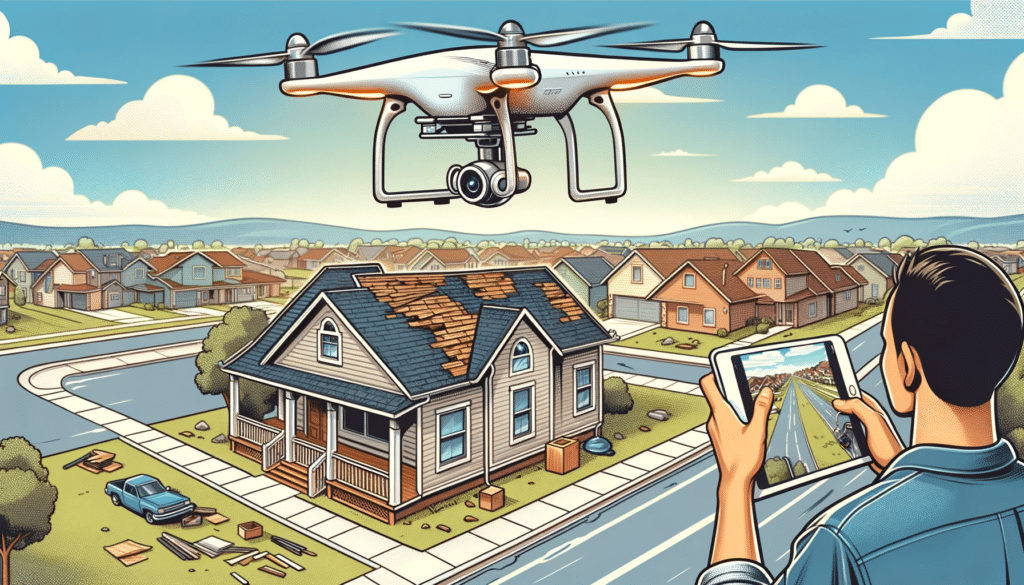
Understanding the Cost of Drone Roof Inspection
Every homeowner, building manager, or potential property buyer who’s considering a drone roof inspection might wonder about the associated costs. While it’s difficult to pinpoint a specific figure due to variations in several factors, it’s possible to understand the main cost components and what might affect them.
The General Cost of Drone Roof Inspections
On average, drone roof inspections can range anywhere from $150 to $400 per inspection. This is a broad range and the final cost depends on several factors, such as the size and complexity of the roof, the location of the property, the specific services required, and the drone operator’s expertise and reputation.
Factors Influencing the Cost
Size and Complexity of the Roof: Larger roofs require more time to inspect and thus cost more. Similarly, complex roofs with many levels, slopes, or unique features may also be more expensive to inspect due to the increased complexity.
Location: The location of the property can also impact the cost. Properties located in urban areas may require more planning and permits, potentially increasing the cost.
Services Required: The type and extent of services required will also factor into the cost. Basic visual inspections are usually less expensive than inspections involving thermal imaging or other advanced services.
Drone Operator Expertise: Lastly, the drone operator’s experience, qualifications, and reputation will play a significant role in determining the cost.
Choosing the Right Equipment for Drone Roof Inspections
Conducting a successful drone roof inspection starts with the right equipment. The drone and its accessories play a significant role in the quality and efficiency of the inspection.
Essential Equipment for Drone Roof Inspections
The Drone: A reliable, sturdy drone with a long battery life is essential. It should have the ability to capture high-resolution images and, if possible, thermal images.
Camera: The camera is critical as it captures the data during the inspection. A high-resolution camera that can capture clear, detailed images is essential.
Software: A good drone roof inspection will require robust software to process the data collected. The software should be capable of organizing and interpreting the data, producing readable reports, and highlighting any potential issues.
How to Choose a Reliable Drone for Roof Inspections
Choosing a reliable drone comes down to a few key factors:
Flight Time: The drone should have enough flight time to cover the entire roof without requiring frequent battery changes.
Image Quality: A drone with a high-quality camera is crucial for capturing detailed, high-resolution images.
Stability: The drone should be stable in the air, even in windy conditions, to ensure the images are not blurred or distorted.
Ease of Use: The drone should be user-friendly and easy to control, even for beginners.
After-Sales Service: Drones are a significant investment, and good after-sales service, including warranties and repair services, can be beneficial.
The Role of Thermal Imaging in Drone Roof Inspections
One advanced feature that’s increasingly being used in drone roof inspections is thermal imaging. This technology uses infrared sensors to measure the thermal energy emitted from an object, helping to detect heat variations that the naked eye cannot see.
Thermal imaging can reveal hidden issues such as heat loss from insulation gaps, moisture intrusion from leaks, or structural issues that affect temperature distribution. In a drone roof inspection, this can be invaluable, as it can highlight problems that might otherwise remain unnoticed until they cause significant damage.
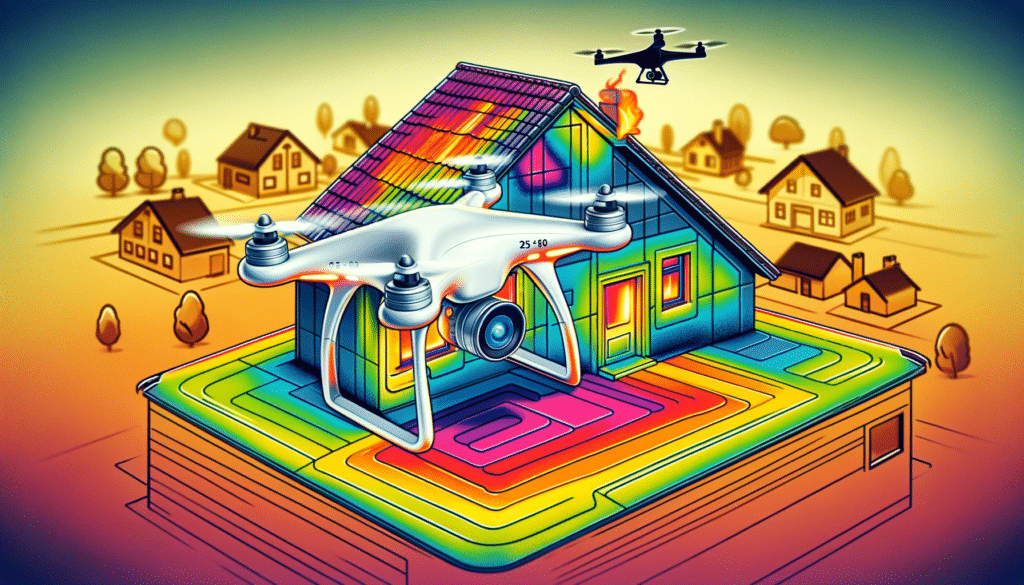
Preparation and Planning for Drone Roof Inspection
Preparation and planning are key for a successful drone roof inspection. This involves obtaining the right certification, understanding the necessary software, undergoing training, and being prepared for residential drone roof inspections.
Getting the Right Drone Roof Inspection Certification
Drone operators need to be properly certified to conduct roof inspections legally. In many jurisdictions, commercial drone operators are required to have a license, such as the Part 107 Certification from the Federal Aviation Administration (FAA) in the United States. This certification ensures that operators understand aviation regulations and safety protocols. It’s advisable to check with your local aviation authority for specific requirements in your area.
Drone Roof Inspection Software and Training
To conduct a thorough and effective roof inspection, drone operators need to familiarize themselves with drone inspection software. This software helps in planning flight paths, collecting and processing data, and generating reports.
Drone operators also need adequate training on how to fly drones, interpret data, and spot common roof issues. This training can be obtained through various online courses, workshops, and training programs. Some drone manufacturers also offer specific training programs for their drones.
Residential Drone Roof Inspections
Residential drone roof inspections can present unique challenges due to smaller spaces, privacy concerns, and local regulations. It’s crucial to understand these factors and plan the inspection accordingly. Drone operators need to ensure they maintain privacy, follow local regulations, and communicate effectively with homeowners to explain the process and findings.
Conducting the Drone Roof Inspection
Once prepared, it’s time to conduct the drone roof inspection. This process involves following best practices, understanding the regulations for flying drones during inspections, and knowing the inspection duration.
Best Practices for Conducting a Drone Roof Inspection
Following best practices will ensure the inspection is thorough and effective:
Plan the Inspection: Define the inspection’s scope, plan the flight path, and check weather conditions.
Maintain Safety: Always keep the drone within line of sight, and ensure it is in good working condition before takeoff.
Capture High-Quality Images: Ensure the drone’s camera settings are optimized for capturing clear, high-resolution images.
Respect Privacy: Be mindful of privacy when conducting residential roof inspections. Avoid capturing images of the interior of the home or neighboring properties.
Be Thorough: Ensure the entire roof is inspected, including difficult-to-access areas.
Regulations for Flying Drones During Roof Inspections
Different countries have different regulations for flying drones. In the United States, the FAA governs commercial drone use. Drone operators are required to follow rules such as not flying over people, keeping the drone within visual line of sight, and not flying higher than 400 feet. Specific regulations may vary, so it’s important to check with local authorities.
How Long a Drone Roof Inspection Takes
The duration of a drone roof inspection can vary depending on the roof’s size and complexity, as well as the type of inspection required. However, in general, drone roof inspections are much quicker than traditional methods. A typical inspection may take anywhere from 20 minutes to an hour. This makes drone roof inspections a time-efficient method for diagnosing roof issues.
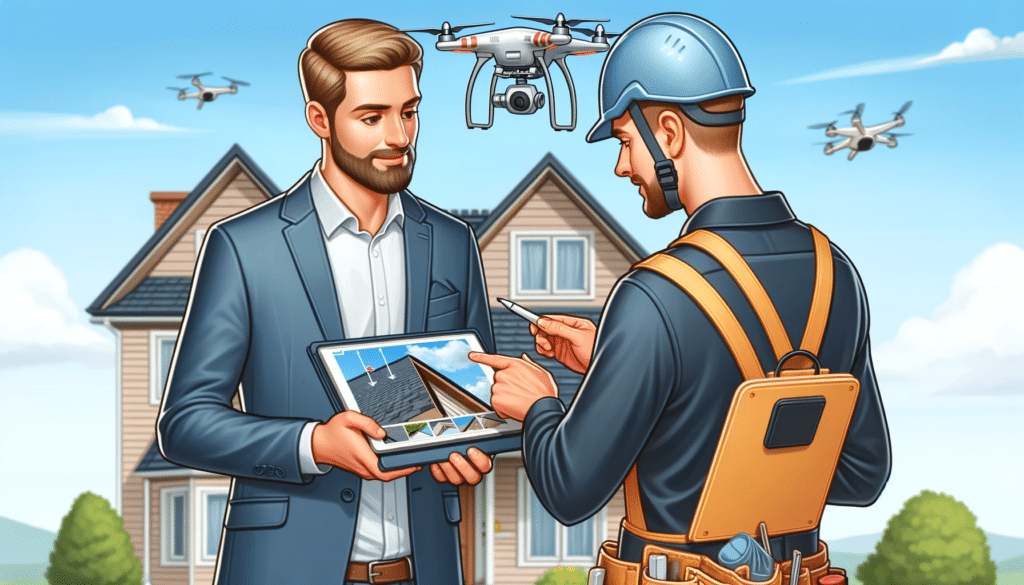
From Data Collection to Analysis
The data collected from a drone roof inspection can be incredibly detailed and provide invaluable insights into the state of the roof. This section will explore the type of data that can be captured, the ability of drones to detect damage or leaks, how to interpret this data, and the role of AI and machine learning in optimizing drone roof inspections.
What Kind of Data Can Be Captured During a Drone Roof Inspection
Drone roof inspections yield an array of valuable data. Here’s a glimpse of the type of data that can be collected:
High-Resolution Images and Videos: These provide a clear and comprehensive view of the roof, allowing for easy detection of issues.
Thermal Images: These help identify areas of heat loss or gain, indicating insulation issues or leaks.
3D Models: These can provide a detailed visual model of the roof, helping owners and contractors understand its current condition.
Geospatial Data: This information can be useful for comparing changes over time or planning maintenance or renovations.
Can Drones Detect Roof Damage or Leaks
Yes, drones equipped with the right technology can detect roof damage and leaks. High-resolution cameras can spot visible damages like missing shingles, cracks, and mold. Moreover, thermal cameras can identify areas where heat is escaping or water is entering, indicating possible leaks.
How to Interpret the Data Gathered from a Drone Roof Inspection
Interpreting drone data requires understanding what different signs indicate. For instance, in thermal images, warm areas might indicate leaks, while cooler areas could signal poor insulation. Training and experience play a significant role in interpreting this data correctly.
The Role of AI and Machine Learning in Optimizing Drone Roof Inspections
Artificial intelligence and machine learning can greatly optimize drone roof inspections. These technologies can analyze the data collected by drones, identifying patterns and anomalies more quickly and accurately than human inspection. They can detect issues like cracking, blistering, ponding water, and more, even before they become visible to the naked eye.
Stepping into the Professional World
Starting a drone roof inspection business can be a profitable venture, but it comes with its unique challenges. Let’s discuss how to start such a business, the common challenges faced, and potential job opportunities in this field.
How to Start a Drone Roof Inspection Business
Starting a drone roof inspection business involves several steps:
Obtain Necessary Certification: Ensure you are certified to operate drones commercially in your area.
Invest in the Right Equipment: Purchase a reliable, high-quality drone, and necessary software.
Get Insured: Drone insurance is essential to protect your business from potential liabilities.
Market Your Services: Build a website, create marketing materials, and network to attract customers.
Common Challenges in Drone Roof Inspections and How to Overcome Them
While profitable, drone roof inspections can present several challenges:
- Regulatory Hurdles: Regulations can limit where and how you can fly your drone. Stay updated with local laws and obtain necessary permissions.
- Weather Conditions: Adverse weather can affect flight conditions and image quality. Plan inspections for clear weather days and use drones that can handle some level of wind and rain.
- Privacy Concerns: Avoid intruding on privacy by always informing neighbors about the inspection and ensuring your drone doesn’t capture images beyond the inspection site.
Drone Roof Inspection Jobs
Aside from starting your own business, there are job opportunities in companies offering drone inspection services. These can include roles like drone pilots, data analysts, and sales representatives. Companies in real estate, insurance, and construction also increasingly require drone inspection services, opening up further opportunities.
In conclusion, drone roof inspection has become an indispensable tool in the modern world, providing unparalleled efficiency, safety, and detailed data. With the right equipment, skills, and approach, mastering the art of advanced aerial surveys is within your reach. If you are interested in further exploring the world of drones, especially in a business context, we recommend visiting Soaring High: A Comprehensive Guide to Building and Growing Your Drone Business. This comprehensive guide provides practical tips and insights on how to successfully start and expand your drone business.
At Blue Falcon, we offer an array of drone services tailored to meet your unique needs. If you need any drone services, feel free to contact us and we would be happy to help. Harness the power of drones for your roof inspections and take your maintenance and assessment tasks to new heights. The sky’s the limit!

